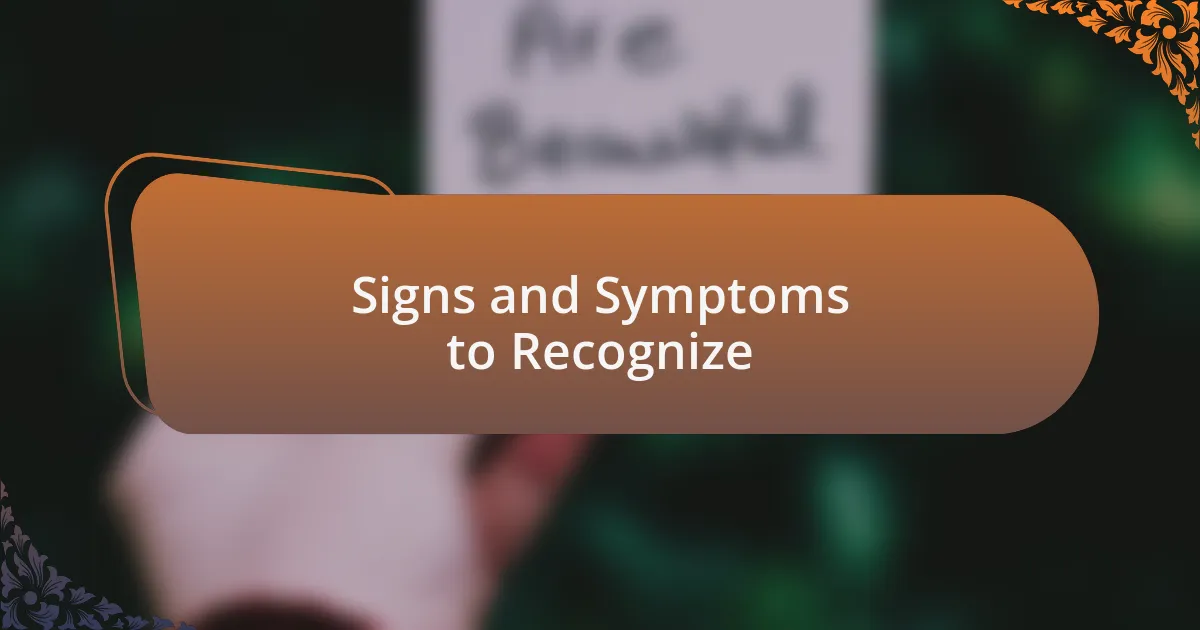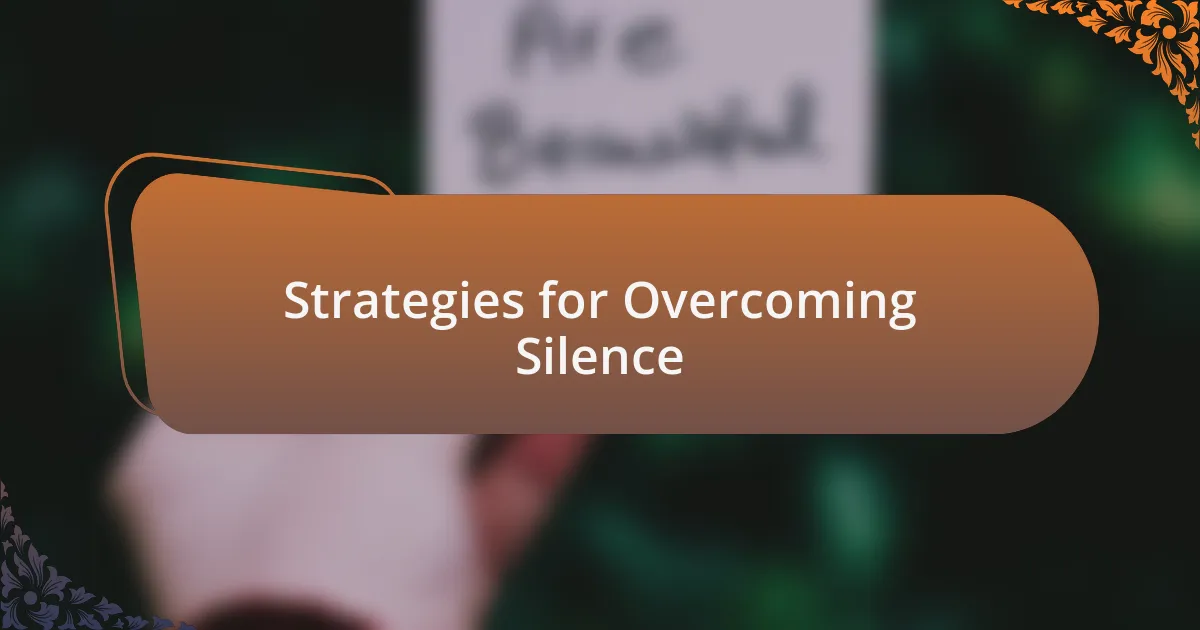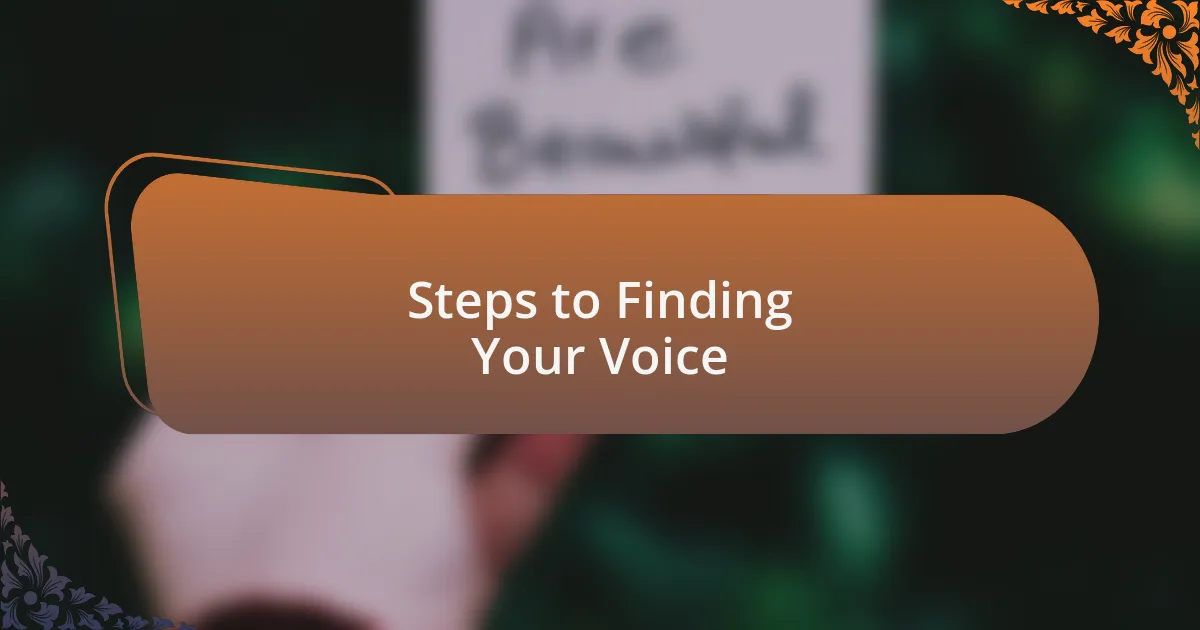Key takeaways:
- Selective mutism is a complex condition characterized by profound anxiety rather than simple shyness, affecting social interactions and emotional well-being.
- Recognizing selective mutism involves understanding signs like non-verbal communication, intense anxiety in social situations, and avoidance behaviors.
- Overcoming selective mutism can be facilitated by creating a supportive environment, gradual speaking practice, and engaging in interactive activities.
- Building communication confidence involves self-compassion, practicing in low-pressure settings, and understanding that effective communication is a two-way process.

Understanding Selective Mutism
Selective mutism is often misunderstood as mere shyness, but it’s far more complex. I remember sitting in a bustling classroom, heart racing, unable to utter a single word despite wanting desperately to join the conversation. How many times do we overlook the profound anxiety that comes with trying to speak when your voice feels trapped?
For some, like myself, the fear of speaking can seem insurmountable. It’s as if a heavy weight sits on your chest, stifling any chance of expression. Have you ever felt that overwhelming pressure in a social setting? It’s not just about being quiet; it’s the fear that the moment you try to speak, judgment or misunderstanding might follow.
Many people with selective mutism experience a range of emotions, from frustration to isolation. I vividly recall moments where I wanted to engage but felt the invisible barrier between me and others. Doesn’t it make you wonder how many voices remain silent, yearning to be heard, simply because the challenge feels too great?

The Impact of Selective Mutism
Living with selective mutism means grappling with not just silence, but the emotional turmoil that follows. I can recall a family gathering where laughter filled the air, yet I remained an outsider, despite my desire to join in. Have you ever felt so close to connection and yet so far away? That moment made me acutely aware of the chasm between what I wanted to say and what I could say.
The impact of selective mutism extends beyond social interactions. Imagine the challenges in classrooms where participation is key to learning; I often felt defeated, missing out on vital discussions. How can one truly absorb knowledge when their voice feels buried under a mountain of fear? The academic pressures can be overwhelming, triggering deeper insecurities about self-worth and competence.
Friendships also suffer under the weight of selective mutism. I often struggled to reach out to peers, fearing they wouldn’t understand my silence. Isn’t it heartbreaking to think that the very relationships we crave can feel strained because of a barrier we never chose? This feeling of being less seen and less known resonates deeply, adding layers to the already complex nature of our experiences.

Signs and Symptoms to Recognize
Recognizing selective mutism starts with understanding its signs. For instance, children might communicate non-verbally in social settings, relying on gestures or nods rather than words. I remember a school event where I could only manage a shy smile, while my classmates chatted away blissfully; it was frustrating not being able to express my excitement.
Another significant symptom is the intense anxiety surrounding certain situations. I vividly recall feeling my heart race and my palms sweat the moment I entered a room full of unfamiliar faces. Do you remember a time when fear held you back from simply speaking up? That sense of dread can become paralyzing, overshadowing even the simplest social interactions.
Physical manifestations, such as avoidance behaviors, can also be telling. I often found myself shrinking away from conversations, choosing to hide behind a parent or peer rather than face the overwhelming prospect of speaking. It’s common to see a child choosing to sit alone during group activities, raising questions about their comfort level and desire for connection. How many of us have missed opportunities to forge friendships due to this invisible barrier?

Strategies for Overcoming Silence
One effective strategy for overcoming silence is to create a comfortable environment for communication. I remember when my teacher introduced a “share circle” during class, allowing us to express our thoughts without judgment. That safe space encouraged me to gradually find my voice, reminding me that sometimes, all it takes is the right atmosphere to spark conversation.
Gradual exposure to speaking can help reduce anxiety. I started with simple tasks, like reading aloud to myself in front of a mirror. This might seem small, but it was empowering. Have you ever felt the rush of confidence that comes with each small victory? For me, those moments were stepping stones to larger conversations, making the idea of speaking less daunting over time.
Incorporating games and interactive activities can also be beneficial. I recall playing a word association game with friends where saying something quickly was key, turning speaking into a fun challenge rather than a source of anxiety. Isn’t it fascinating how play can shift our perspective? By framing communication as a delightful experience rather than a stressful requirement, we can encourage expression in a way that feels organic and enjoyable.

Steps to Finding Your Voice
Finding your voice often starts with self-compassion. I remember a time when I would criticize myself for feeling anxious about speaking, but I learned to acknowledge those feelings rather than dismiss them. Isn’t it liberating to recognize that struggling is part of the journey? Embracing your emotions allows you to shift your focus from the fear of speaking to the joy of expressing yourself.
Another crucial step is to practice speaking in low-pressure situations. For instance, I began having conversations with my pets or even inanimate objects, like my favorite book. While it might sound quirky, giving voice to my thoughts in those moments felt like a warm-up before tackling real-life interactions. Have you tried talking to a mirror? It may feel odd at first, but that reflection can become a supportive listener who encourages you to explore your thoughts aloud.
The power of journaling cannot be underestimated. I’d often sit down with a blank page, pouring my thoughts onto it without worrying about grammar or coherence. This was transformative; it allowed me to articulate feelings that I otherwise struggled to voice. Have you felt the release that comes from putting pen to paper? It’s like unlocking a door to your inner self, paving the way for your spoken voice to emerge more confidently.

Building Confidence in Communication
Building confidence in communication often stems from understanding that every voice matters, including yours. I found that incorporating small daily affirmations into my routine significantly changed my mindset. For example, standing in front of the mirror each morning and affirming, “I have something valuable to say,” shifted how I approached conversations. Have you ever considered how powerful positive self-talk can be in reshaping your beliefs about communication?
Another effective technique I discovered was gradually exposing myself to social settings that felt a bit intimidating. Initially, I’d attend small gatherings where I only needed to listen. Over time, I’d find the courage to contribute at least one thought to the discussion. I still remember how my heart raced the first time I spoke up in a group, but that one moment of bravery ignited a spark in me. Isn’t it amazing how those small steps can lead to bigger leaps in confidence?
Lastly, I realized that learning to listen is just as important as learning to speak. I embraced the idea that communication is a two-way street; by focusing on what others say, I felt less pressure to perform. This shift in perspective allowed me to engage without fear, letting my own thoughts flow more naturally during conversations. Have you tried being an active listener? It could open doors to more authentic exchanges where your voice feels empowered.